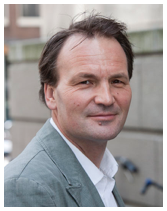1.1 What is modelling?
Example: Ecology
“Communities of plants and animals in nature consist of individuals who depend on each other or who compete with each other. For example, lions depend on zebras that they eat to survive, and trees and grass compete on the African savanna for available space. These interactions between various plant or animal species form the heart of every natural system: they ensure that species cannot grow forever, but may also lead to extinction of species. It is impossible to predict the effect of these interactions on the dynamics of a natural system by only thinking deeply. Mathematical models are indispensable for determining these effects.
Mathematical models are constructed in ecology by capturing the interactions between two species in a mathematical description. For example, if P represents the number of predators and N represents the number of prey animals, the term c·P·N describes the number of encounters between a predator and a prey (or the probability), that is, the speed at which predators eat prey. Here, the parameter c is a constant number. The term just derived is one of the basic elements in a classic model in ecology, the Lotka-Volterra predator-prey model. This model predicts, among other things, that through this interaction the densities of predators and their prey in a certain area will fluctuate forever. This phenomenon is called the predator-prey cycle: shortage of prey decreases the number of predators, abundance of predators decreases the number of prey. Actually, this is also observed in many natural systems. This consequence and the explanation for the observed fluctuations in predators and prey are predicted by the mathematical model.
A second important reason to use mathematical models in ecology concerns the duration and the difficulty, or even impossibility, of doing large-scale ecological experiments. For example, if we want to determine what the consequences would be of introducing wolves into the Oostvaardersplassen, we could only do the actual experiment once and one would run major risks. In such cases, mathematical models offer a solution, because you can use them to gain understanding of possible consequences, dangers and risks before the actual experiment is started.”

André de Roos, professor of Theoretical Ecology